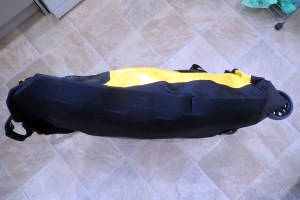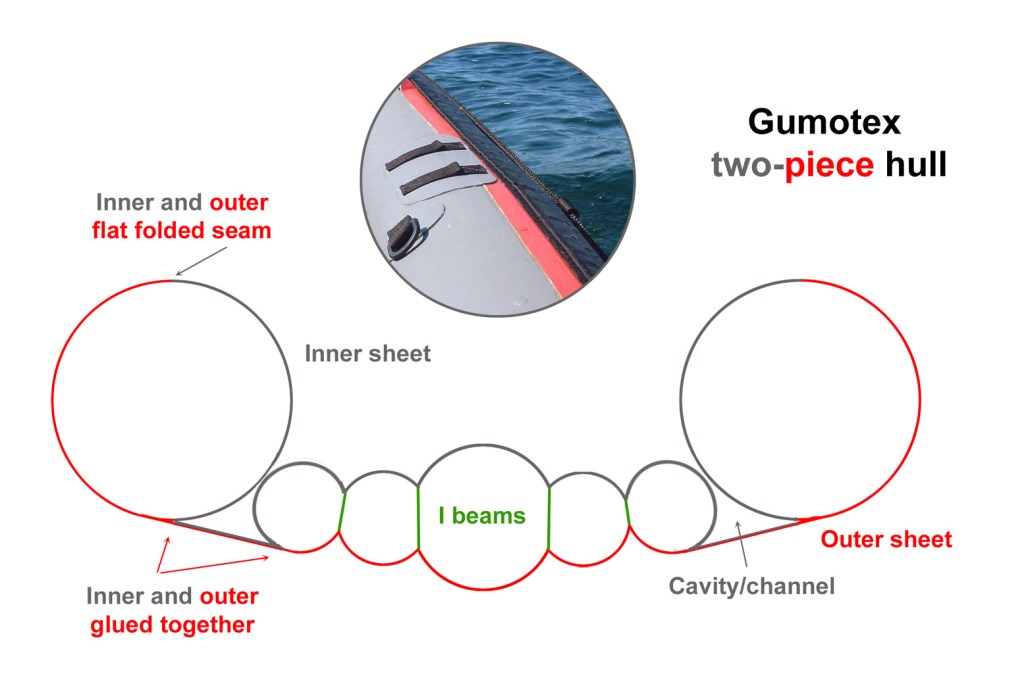Though not totally convinced by the boat just because it was new, I planned to buy a Gumotex Rush 2 in the early summer of 2020. I sold my old Seawave easily, but by the time I dithered over coughing up a grand, UK lockdown discounts had ended. Soon availability of Rushs dried right up, along with so many other IKs in 2020, which also saw prices shoot up.

Eventually it transpired the Rush wouldn’t be back before 2021 (was there some flaw with the new design?). Needing a boat for the book cover, with help from a Czech chum, I bought a second-grade Seawave direct from Gumotex, saving 15% on the CZ price (Gumo won’t sell these specials outside CZ). This was just before the price went up to nearly €1300. As predicted, Gumotex prices have risen across the board; the Rush 2 is now nearly €2000 and demand has not surprisingly collapsed.

“Defects … are only of a visual nature (abrasions, patches, larger amounts of glue, stamp imprint, etc.) and do not affect the driving characteristics and life of the boat.“
Rather unnervingly, the exact nature of each boat’s damage is not specified or identified by Gumotex. It’s the luck of the draw. On unpacking the new boat it took me a while to locate a barely visible patch on the side (left). It may not even be a hole (hard to believe how that could happen in the factory), more likely a scratch or a nick down to the scrim.
Anyway, I’m happy with my Seawave, one boat I don’t mind owning again until something better comes along. The only difference I can see between my old one are grommet/ports for the rudder kit on the stern deck. The factory fresh fabric also feels oddly tacky, like TPU, something I’m sure will go away.
The seats and footrests are the same old over-weight rubbish. Gumotex aren’t making any innovations here. Just as with my first Seawave, before the boat got wet the seats went onto eBay for fifty quid, bringing the price down a bit. I refitted my proven packraft seatbase/SoT backrest idea. More on seats here.

One useless footrest cushion got chopped down into spare Nitrilon patches and oral valves. For a non-critical low-psi item, inside it looks amazingly well made. I plan to re-fit my footrest drainpipe system, and have a great new idea about how to fit and adjust it. More about that soon.


I took the chance to re-measure the Seawave. Yes, it really is just 30” / 76cm wide and yet looks huge in the corridor – the only place in our flat it can be inflated.
And it weighs 19kg with everything in the supplied bag, Ditch the seats (965g x 2) and footrests (411g for both), add a single SoT/packraft seat and a mooring line, and the 4.5m Seawave is a genuine 16kg on the water. Pretty darn good for a 4.5-m boat.
And it’s compact too. Now I’ve learned how to vacuum-shrink a boat (you need a bayonet nozzle with valve-opening pin) and have added an oral valve to shrink down my Ortleib RS140 roller bag too (above right), the boat takes up less room than ever.
An interesting thing was pointed out to me about the Seawave and other tubed Gumboats: they are effectively made from just two big sheets of Nitrilon (plus deck pieces): the red outer/lower and the grey inner/upper (above). They touch at the edges of the floor and join in a flat seam on top of the sidetubes. Simplicity, I like that.





Thanks for your detailed articles. We just bough a second hand but lightly used Seawave for exploring coast areas from our yacht.
LikeLike
Thanks and good to hear. You will enjoy your Seawave.
LikeLike